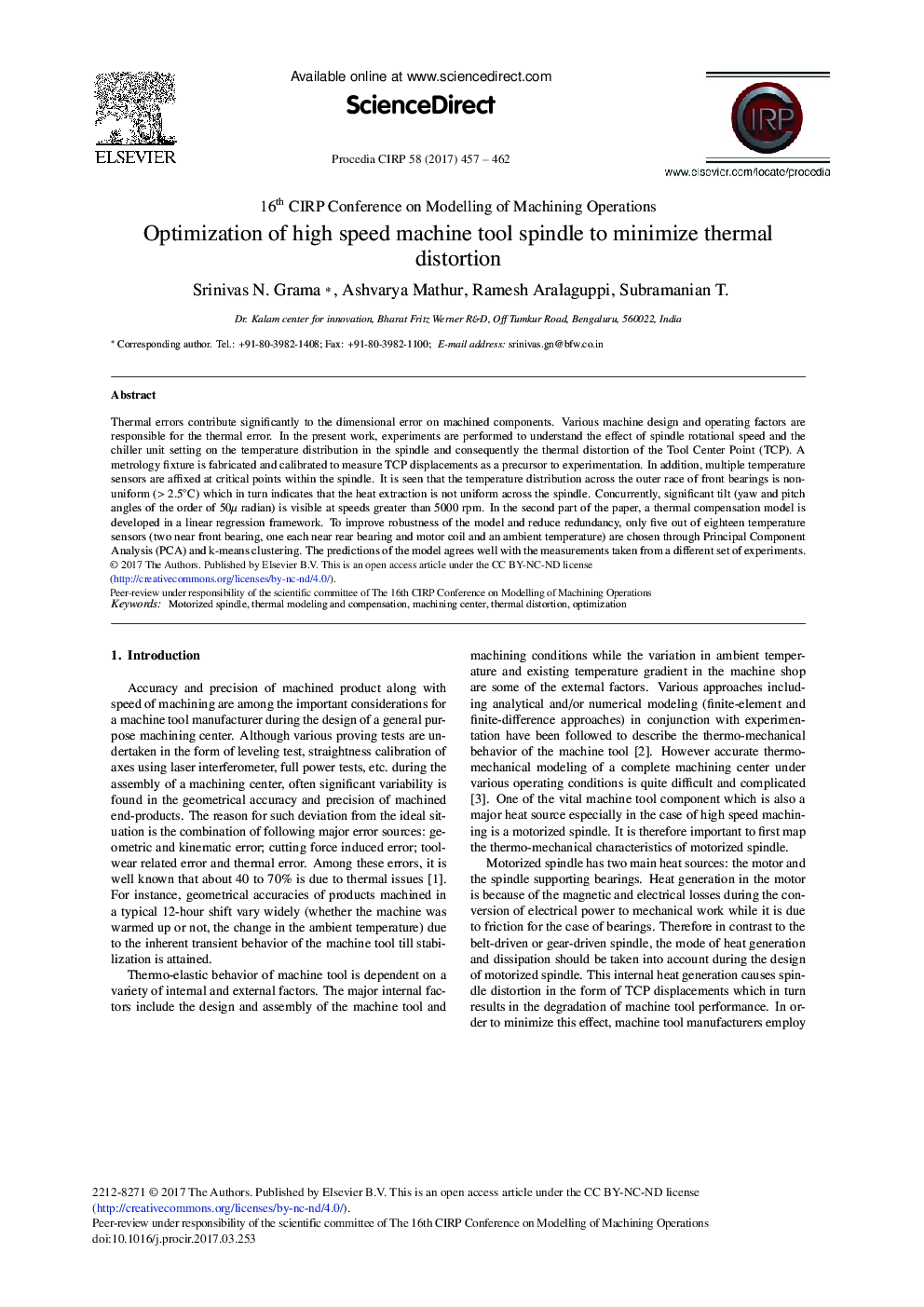| Article ID | Journal | Published Year | Pages | File Type |
|---|---|---|---|---|
| 5470294 | Procedia CIRP | 2017 | 6 Pages |
Abstract
Thermal errors contribute significantly to the dimensional error on machined components. Various machine design and operating factors are responsible for the thermal error. In the present work, experiments are performed to understand the effect of spindle rotational speed and the chiller unit setting on the temperature distribution in the spindle and consequently the thermal distortion of the Tool Center Point (TCP). A metrology fixture is fabricated and calibrated to measure TCP displacements as a precursor to experimentation. In addition, multiple temperature sensors are affixed at critical points within the spindle. It is seen that the temperature distribution across the outer race of front bearings is non-uniform (> 2.5°C) which in turn indicates that the heat extraction is not uniform across the spindle. Concurrently, significant tilt (yaw and pitch angles of the order of 50 μ radian) is visible at speeds greater than 5000 rpm. In the second part of the paper, a thermal compensation model is developed in a linear regression framework. To improve robustness of the model and reduce redundancy, only five out of eighteen temperature sensors (two near front bearing, one each near rear bearing and motor coil and an ambient temperature) are chosen through Principal Component Analysis (PCA) and k-means clustering. The predictions of the model agrees well with the measurements taken from a different set of experiments.
Related Topics
Physical Sciences and Engineering
Engineering
Industrial and Manufacturing Engineering
Authors
Srinivas N. Grama, Ashvarya Mathur, Ramesh Aralaguppi, T. Subramanian,
